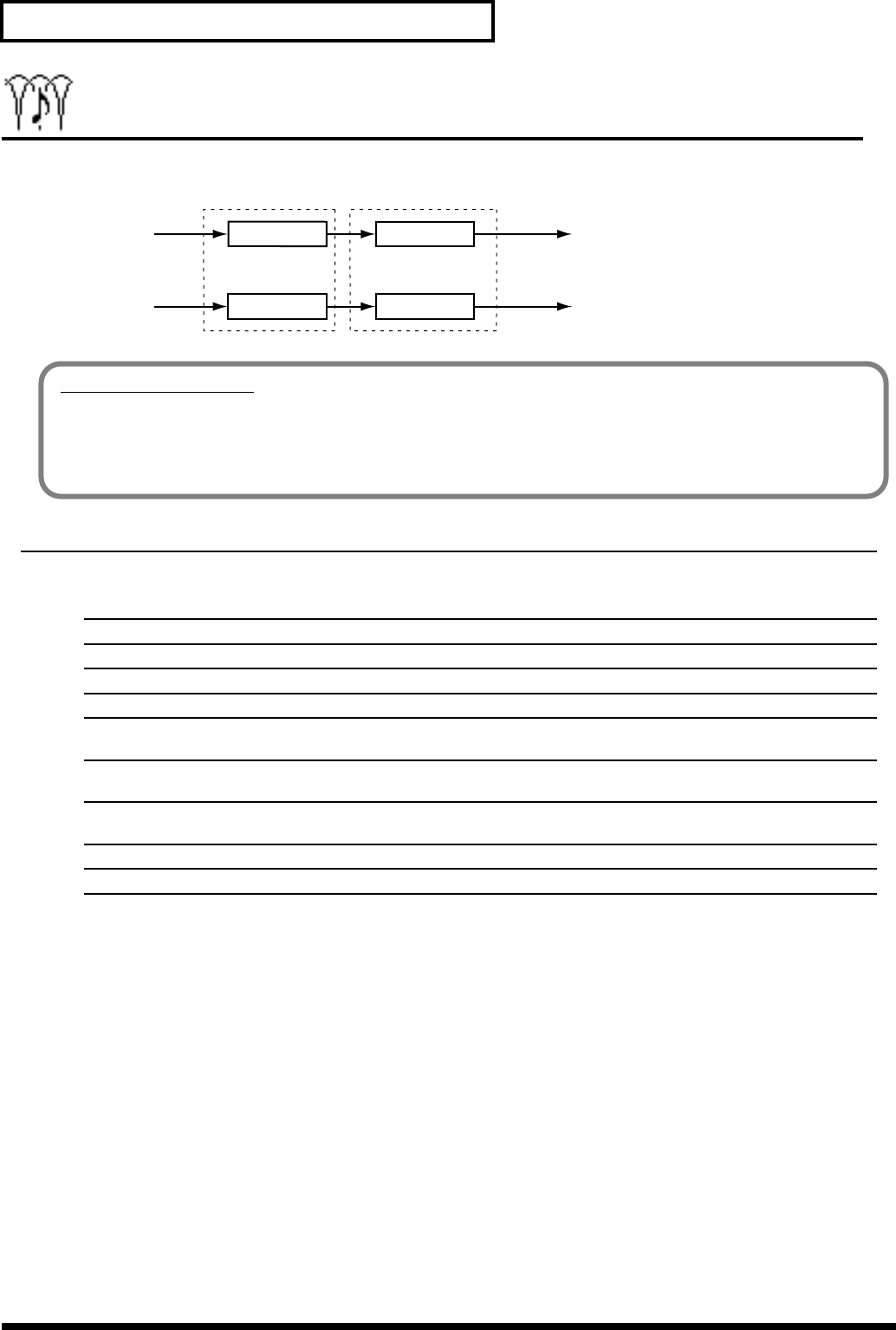
64
Algorithm List
Stereo Phaser
A phaser adds a phase-shifted sound to the direct sound, producing a twisting modulation that creates
spaciousness and depth.
fig.08-36
Parameter (full name) Setting Function
Phs (Phaser): Adds a sound with a shifted phase to the direct sound to add spaciousness to the sound.
Sw (Switch) Off, On Turns the phaser on or off.
Mode (Mode) 4, 8, 12, 16 Sets the number of stages in the phaser (p. 66).
Pol (Polarity) Sync, Inv Sets the right and left phases of modulation. *3
Rate (Rate) 0.1–10.0 Hz Sets the rate at which the phaser will modulate.
Depth (Depth) 0–100 Sets the depth of modulation.
Manual (Manual) 0–100 Sets the reference frequency for adding the surging effect
to the sound.
Reso (Resonance) 0–100 Enhances frequency components at around the center
frequency set with Manual. *1
CrossFBLvl (Cross-Feedback Level) 0–100 Sets the amount of the phaser sound to be returned to the
channel opposite to the one used for input. *2
FX Lvl (Effect Level). -100–100 Sets the volume of the phaser sound.
DirLvl (Direct Level) -100–100 Sets the volume of the direct sound.
Input L
Input R
Output L
Output R
Phaser L
Phaser R
3BAND EQ
3BAND EQ
Phaser and Flanger
The effects obtained with Phaser and Flanger are very similar. Both add twisting modulation effects to the sound,
creating spaciousness and depth. In other words, they create something like strongly accentuated chorus.
Phaser provides a unique surge sounding like bubbles coming up. Flanger works mostly in the same mechanism
as for Chorus. Besides that, it can create SE-type sounds like ascending/descending sounds of a jet.
2400_app_e.book 64 ページ 2005年4月28日 木曜日 午後1時14分


















